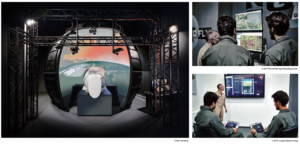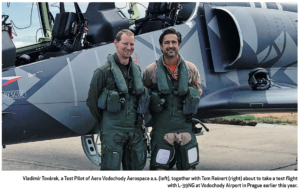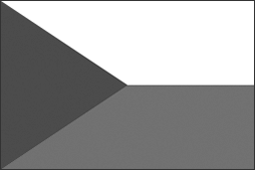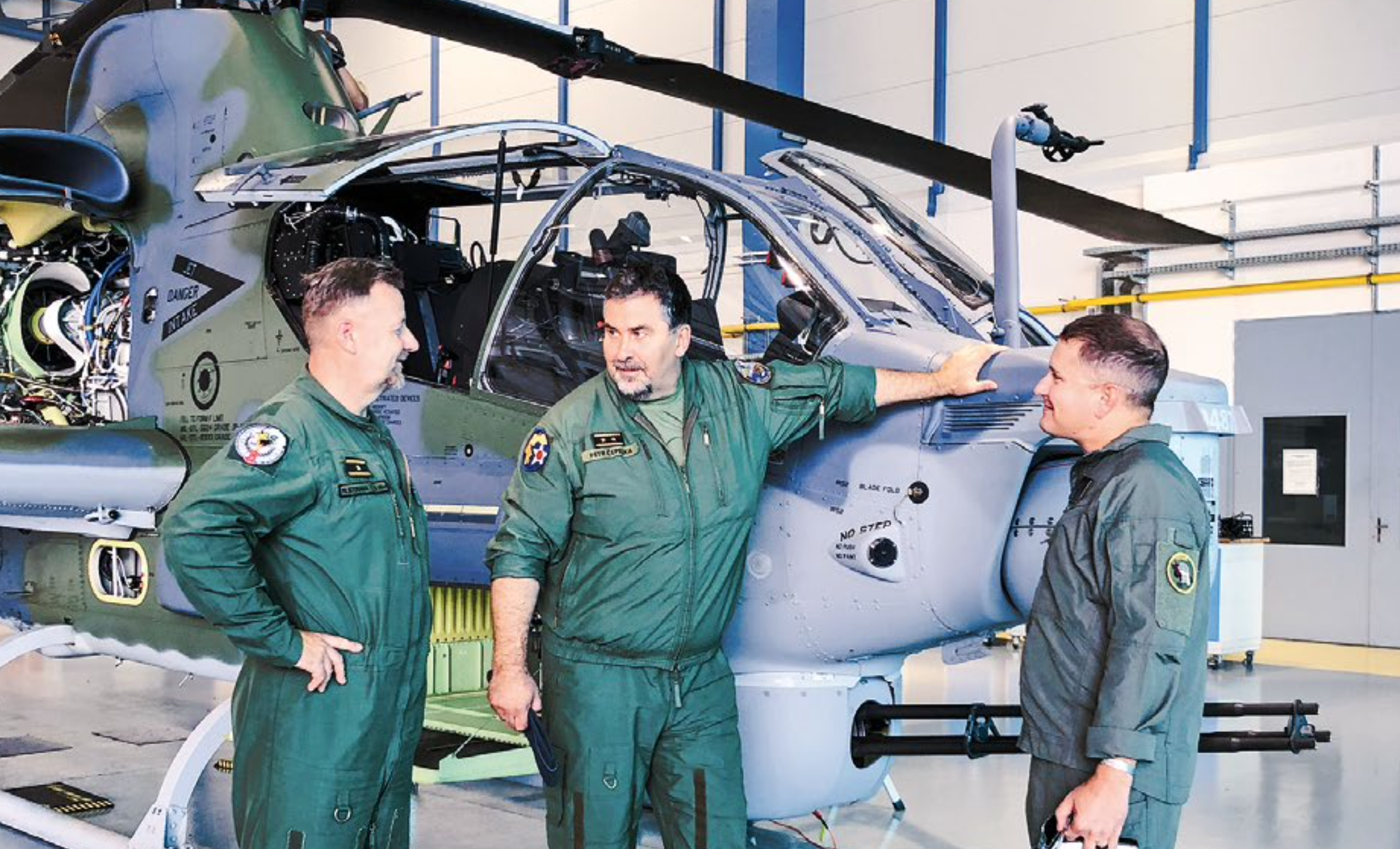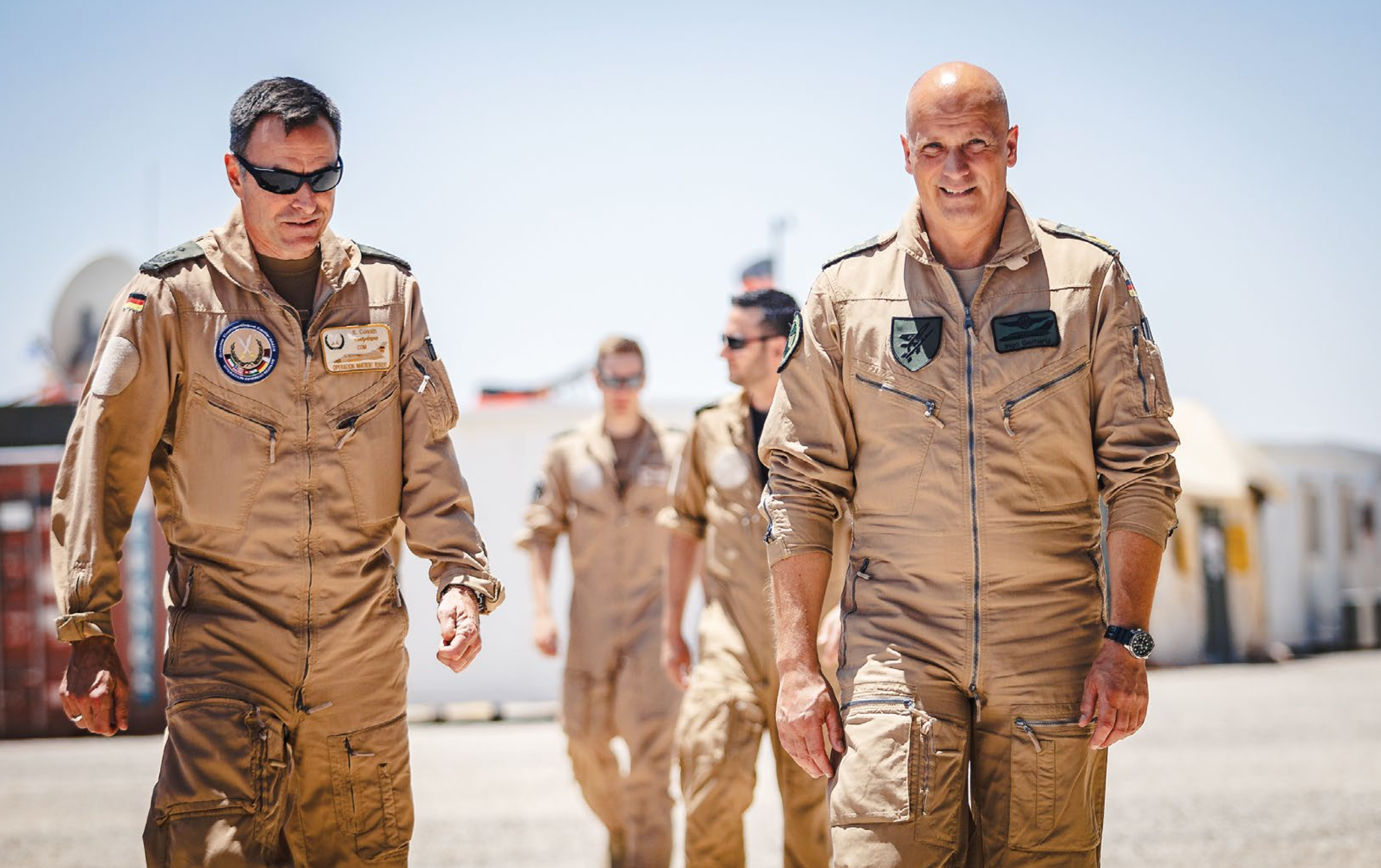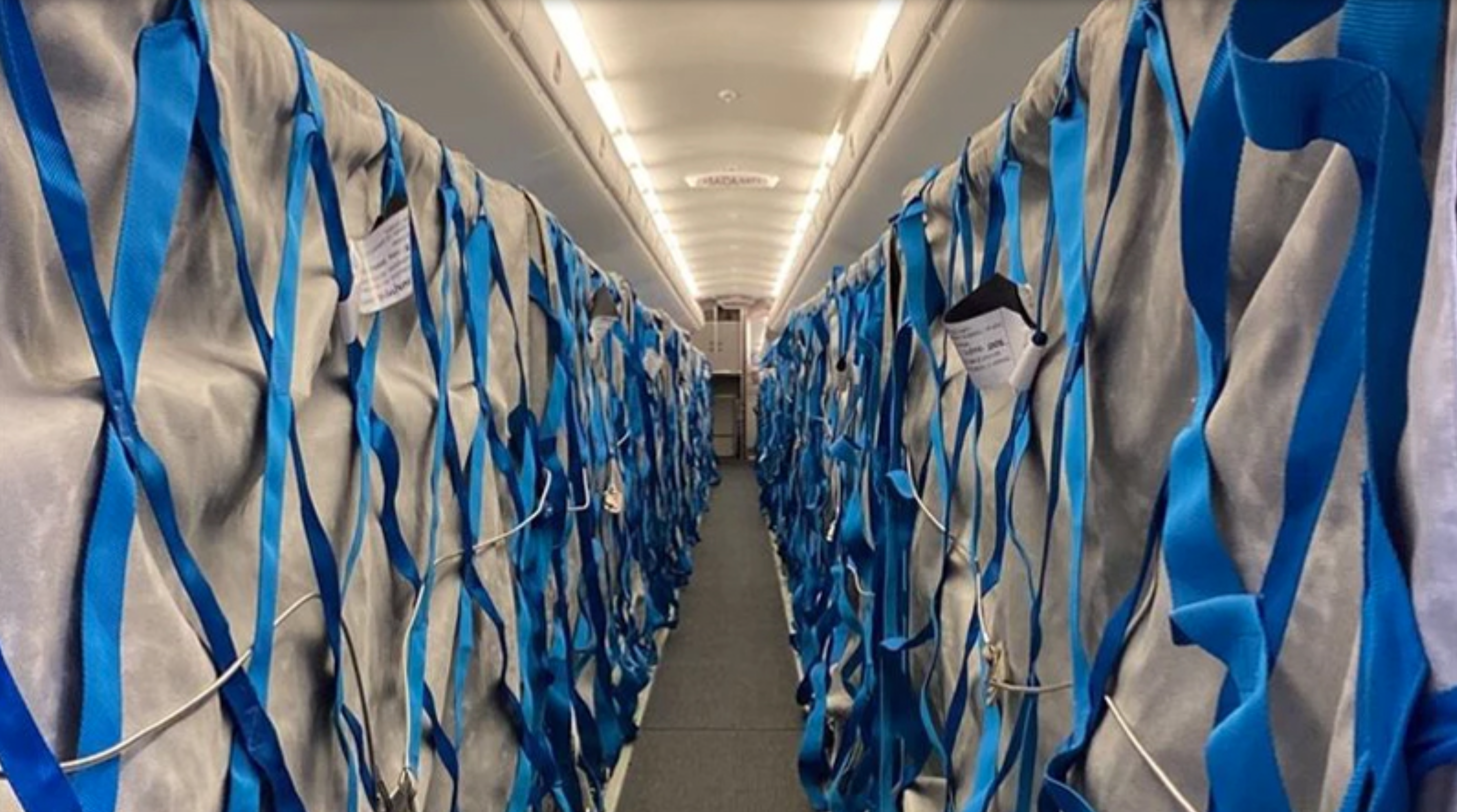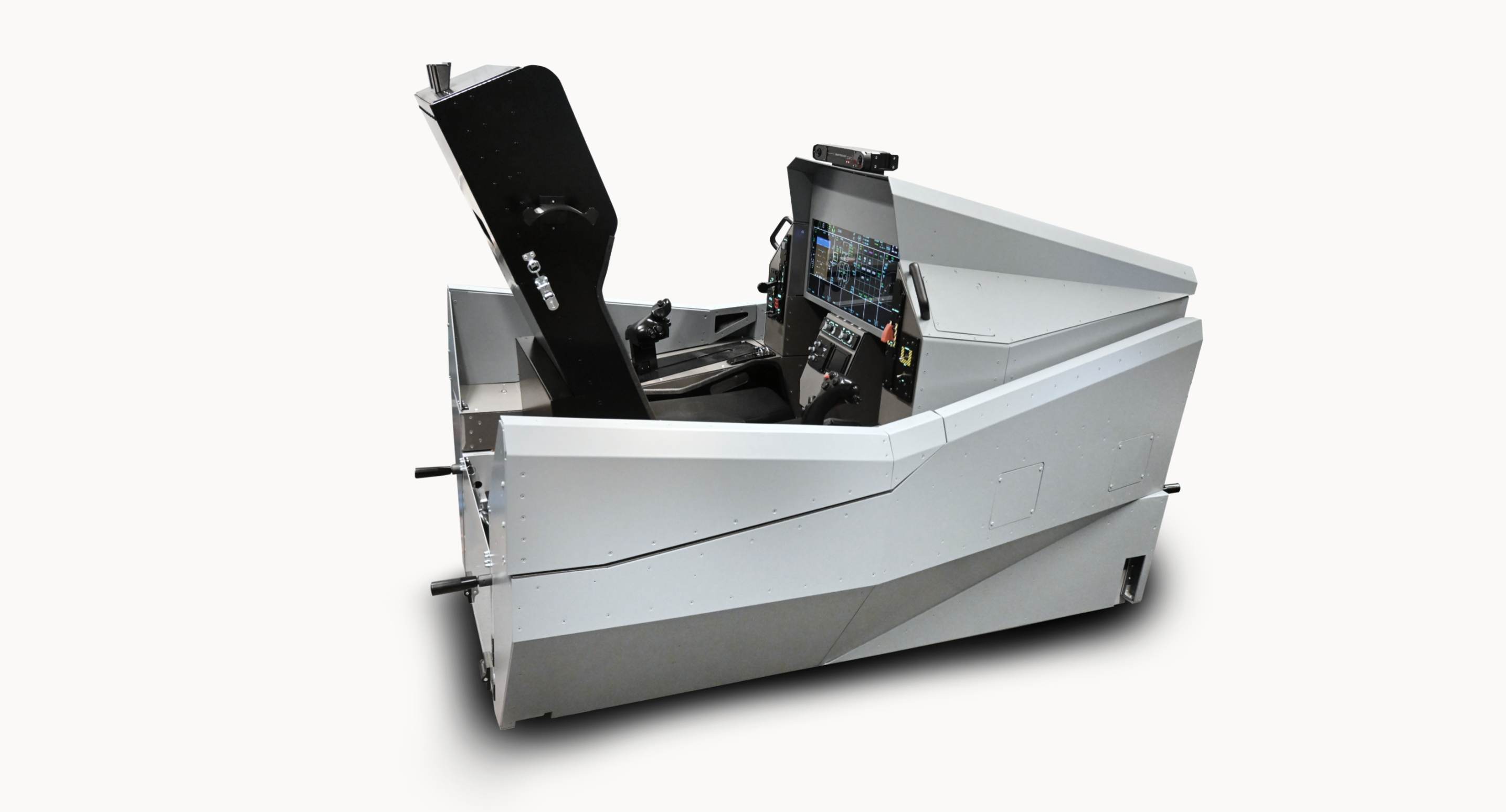The tendency to stream pilot training at an earlier stage as in the past is being adapted globally to the new operating parameters and requirements. The G 120TP has been designed around the future needs of global air forces and sets a new and unmatched standard in military pilot training.
Interview with Thomas (Tom) Reinert, H3 Grob Aircraft SE Chief Pilot by Jakub Fojtík
With the ongoing COVID-19 pandemic, there is probably not a better question to begin with, than how did it affect H3 Grob Aircraft SE and its worldwide operations?
As you can imagine, we have experienced many challenges as far as our global activities are concerned. Our ability to meet the needs of our customers and their normal operations wasn’t interrupted. Although, my core activities at H3 Grob Aircraft SE as Chief Pilot and Head of Sales, experienced a lot of schedule changes and cancellations. The biggest disruption was the delivery of additional G 120TPs to the Ethiopian Air Force. Due to flight restrictions in Europe, and even worse ones in Africa, we weren’t able to deliver the airplanes to the customer as planned. But eventually they received all of their airplanes and are happily flying them. They are currently located at the same base where Aero’s L-39C is overhauled and is converted to the new L-39CG standard. This means it is basically the originally delivered L-39C but is now fitted with the Genesys Aerosystems IDU 680 EFIS, the same that are in the G 120TPs.The worst impact, however, was on the planned demo flying activities. All air shows got cancelled and all our planned visits, where we either receive potential customers or visit them at their facilities, got delayed. Also, already won tenders got cancelled due to budget constraints. That hit us pretty hard, but on the other hand, we also have new developments due to COVID-19. The German Air Force decided to shift their training activities from abroad back to Germany for the foreseeable future. This will lead to new opportunities for training centres here in our home market.Talking about training centres, we were pleasantly surprised when we received a contract for a training centre in Africa in the middle of the restrictions. The challenge here is that we are still not able to go there and start the activities, but we have already started to build the airplanes for this training centre. It is called East African Aviation Centre of Excellence, E-ACE (I am sure that you from ACE will like the name) and its home is Kenya. We will train the Kenyan Forces there and international students from countries that don’t have their own capacities. The focus is on military pilot training for Fast Jet, Transport and Helicopter pilots but we will be able to train there to EASA standards and licensing since we will have a satellite training site from our own EASA ATO at the premises.When I say that we are setting up training centres now, it means that we have evolved from purely being an aircraft manufacturer to also providing training solutions. We are building the airplanes and the associated Ground Based Training Systems and additionally operating these for the customer and even providing the instructors.
There was a huge development in the area of advanced and LIFT training, where several rebranded or new models were introduced, but these lower-value segments were, putting it mildly, abandoned. Why did H3 Grob Aircraft SE attack this market segment with the G 120TP? The company was making various planes, but now it seems to have refocused on only a few segments, where it excels…
I am proud to say that we are the benchmark when you look for an ab-initio/basic to advanced training aircraft for military pilot training. There is no other new design aircraft that comes with EASA CS23, FAA FAR 23, Indian CAA and many military certifications. Since our certification in 2013, we have delivered more than 150 G 120TPs to customers around the planet. The G 120TP will stay in our portfolio for a long time and we have many new campaigns lined up for the next 5 years to keep the production line busy. But we are not limited to the G 120TP. The G 520NG is also available but for a totally different purpose, and our H3 Mission branch is modifying other manufacturers’ existing aircraft with mission equipment.
It seems that there is significant interest from the market in G 120TP model. Can you briefly describe what makes this plane so unique and popular among military customers?
The idea for G 120TP goes back to the philosophy of an enhanced training aircraft. Meaning, you can start to learn how to fly but also continue training on the same airframe for a longer time than “before”, because it offers the performance and the systems to keep the students busy for longer. This idea, paired with a state-of-the-art design and manufacturing process, built entirely out of composites, with civil and military certification standards, make it a very popular choice for military customers around the world. There is no other modern side-by-side training aircraft available with full digital cockpit, fully IFR with Auto pilot, and is also fully aerobatic. The side-by-side seating arrangement means it is the perfect choice for the ab-initio training but also for both transport and most of the helicopter pilots, given their cockpit configuration. Also, in-training jet pilots sit in the “right” seat with the stick in the right hand and the power lever in the left.
With its unique capabilities such as high speed and aerobatics capability, what is its ideal role in the training syllabus of a modern Air Force?
Replacing the complete training system in an Air Force is always the best approach for us. We had the chance to do that in Jordan where they replaced the Fireflys and the CASA 101s. Then we are able to exploit the full capabilities of the G 120TP and offer elementary and basic training and, depending on the subsequent aircraft, some parts of the advanced training. Most of the time we are just replacing one aircraft in the inventory and then we are “forced” into that niche flying what the previous aircraft was doing. Since the G 120TP is so versatile and fits in everywhere it is not a problem at all, but its full potential may not be used.
With the competitive turboprops, even the newer ones, the direct transition to fighter jets was never a given. How would you position the G 120TP in comparison to turboprops such as PC-21?
The G 120TP cannot conduct the same missions as the PC-21. The envelope is not the same. The TP has its strength on the left side of the envelope and the PC-21 reaches more to the right since it goes faster. I mentioned Jordan already where we have applied the combination of G 120TP to PC-21 leading to the F-16. We have at least one potential customer who is considering going from the G 120TP directly to a single engine supersonic jet. I am curious how that will work out if they decide to do it. It will obviously demand massive changes in the preparation syllabus for the jet.
The costs of the training must always be considered. Obviously, any new concept has to either bring more value, or reduce the cost. Where do you see the G 120TP’s role in this area?
It actually does both. Yes, theG 120TP costs more than i.e. a single engine piston trainer but brings more value in training content and in a reduction of transition training from a less capable to a more capable trainer. I mentioned this already in regard to the “enhanced training aircraft”. It offers training content that was typically available on the advanced training aircraft. One example is the Multi Crew Training for the Transport pilots. Typically, it was done on the operational aircraft since the trainers didn’t have Dual FMS and Autopilot with Flight Director. The G 120TP is certified as a single pilot aircraft but can be operated in Multi Crew Concept. This can now be downloaded to the G 120TP and that is when the “savings” start.
As the G 120TP may be deployed over a wider area of training stages, what are the direct benefits for the operator? Can you describe some highlights that your existing customers have reported?
Sure, one fact is the reduction of different platforms. That way you are not flying a “small piston” and a light jet trainer (like in my case the Beech Bonanza and then the Cessna T-37) before you fly a faster jet trainer. The Royal Air Force for example has run UKMFTS since 2017. Instead of flying the G115, the Tucano and the HAWK, they now train their future Eurofighter students only on the G 120TP and the HAWK before converting to the TYPHOON. UKMFTS was structured for the fast jet pilots to fly the G 120TP, then the Texan T-6C and then the HAWK T2. But the RAF realized that the G 120TP can take over the syllabus of the T-6C and so they made this change recently for the future Eurofighter pilots. Only the future F-35 pilots still fly the T-6C syllabus. There is less time in transition training lost, since you don’t need to learn an additional aircraft on the way to the real operational aircraft. And time means money to the military.
On the other hand, one of our customers still refuses to accept this reality and holds on to their old traditional syllabus, which involves about 80 FH and one-year duration on the C-182 before starting on the G 120TP. In 2017, we ran a trail syllabus for two ab initio student pilots from that Air Force and trained them in 4 weeks in Germany on the G 120TP in an Initial Flight Training Syllabus on the G 120TP training system. It involved academics, 15 simulator sorties, life support training (oxygen & parachute) and 5 training flights before they flew a supervised solo. These 4 weeks made up for one-year training on the C-182 without considering the redundant training, which is typically experienced as a result of transferring from a piston engine aircraft. But that Air Force hasn’t decided yet to omit the one-year Cessna training since they wouldn’t know what to do with that training squadron and the people involved.
Some traditional military customers will surely object to the side-by-side seating and lack of ejection seats. How did you overcome this hurdle with your previous customers?
This is a tough discussion point to win. Usually everybody has their own opinion and experience. I was trained in the USAF on the T-37, a side-by-side Twin Engine Jet with ejection seats before progressing to the T-38.
When you “only” train future fighter pilots, who are “pre-screened” to become fighter pilots, it might be good to start them on tandem trainers; however, tandem trainers present a greater challenge for the instructor than side-by-side. When we look at the actual needs of most militaries, we can see that there are more transport and helicopter pilots needed than jet pilots. Many times, the ability of the student to survive an ejection is one of the selection criteria. As a result of the side-by-side config, more in-training transport and helicopter pilots are eligible for certification, despite having potential medical conditions that disqualify them from using ejection seats. If the G 120TP had an ejection seat, we wouldn’t be able to train those pilots.
The plane is entirely built of composite. What is the life span of that construction?
It is certified for 15,000 flight hours. Considering a typical use of 500-700 hours per year per airframe, you can enjoy up to 30 years of life span or even more. It is not limited by “age”, only by usage.
What is the status of the G 120TP? We’ve seen all prototypes flying with civilian registrations, although the operators are military. How do you handle this mix?
All of our production aircraft are flown initially on civil registration and certified against CS23. The military registration comes later with the customers. All of them would have transferred the civil registration to the military in their country.
You are a former fighter pilot. Could you highlight the key areas where H3 Grob Aircraft SE´s modern jet training addresses needs that you did not receive during your own training, and that you would have appreciated?
Basically, everything on the ground. Computer based training, virtual and augmented reality, proper simulators with excellent visual systems. All of that is available from H3 Grob Aircraft SE along with the superb training aircraft. The complete training system makes all the difference and is what I praise the most during demonstrations. The ability to shift training between the aircraft and the simulator is also a major factor to consider in regard to time and money. In addition, the value added in regard to flight safety by proper preparation training in the simulator is priceless.
Can you describe to our readers what it is like to fly the G 120TP? I had a chance to fly it with you and liked the performance a lot. But how do you compare it to other trainers and planes in general? What are the key highlights in your view?
During my active duty I was flying mainly the TORNADO as both a regular pilot and as an instructor pilot. My instruction on the TORNADO was not so much on how to fly but more how to fight with it. In-between, I was on an overseas assignment, where I flew the Grob G 120A as an instructor in Initial Flight Training. That is where I was teaching how to fly. The G 120A is quite challenging for a student pilot to handle and has a lot of “propeller-isms”, which the military pilots will never see afterwards. Many times, when potential customers visit H3 Grob Aircraft SE or when I talk to them at airshows or other events, they tell me that they think a powerful turboprop with all that modern avionics is way too challenging for a beginner student. Whenever I hear this statement during customer visits to our HQ in Germany, I pull a G 120A out of the hangar and let the pilot fly it. Right after that flight I will fly with the same pilot in our G 120TP and everybody is very surprised how much easier it is to handle than the G 120A. It handles much easier during take-off, in regard to controllability, then it really wants to climb away from the ground and accelerates in level flight almost to VMO. That means you can feel the power, but you are not overpowered to control it. The envelope of the aircraft, starting from stall speed 60 KIAS to VMO of 238 KIAS, is a real envelope that you can easily manoeuvre. Also, the +6g can already be achieved with 164 KIAS. These are not theoretical numbers but real figures our pilots can experience in every flight, if they choose. Also, the high envelope is a real figure. We fly 25,000 ft on every production test flight and on ferry flights I usually take it up there to get the benefit of the low fuel consumption at a high True Airspeed. Other trainers might have a similar number. I don’t want to bad-mouth any competitors, but I can mention our G 120A as an example here. The maximum speed allowed on the G 120A is 235 KIAS, similar to the G 120TP (238), since it has a very similar airframe, but you only reach that 235 KIAS in a G 120A in a dive of about 45° nose low at full power. The maximum ceiling of the G 120A is 18,000 ft. I have about 1,200 flight hours in the G 120A but have not experienced anything higher than 15,000ft. The bottom line is, the G 120TP is letting you do what is in the book, without demanding that you are a magician.
There are some very prestigious operators using the G 120TP, can you briefly describe the service with US Army and UK based Qinetiq?
The US Army is using our aircraft in a very specialized way within the CAE USA training centre in Dothan, Alabama. The G 120TP is in use to convert trained US Army helicopter pilots to fly fixed wing aircraft. The Army operates more than 300 KING AIRs and they recruit all their pilots from their helicopter crews. The other program that you mention is even more specialised. It is the Empire Test Pilot School (ETPS) at RAF Boscombe Down that uses the G 120TP in the Fixed Wing Test Pilot curriculum. Future (mainly military) Test Pilots and Flight Test Engineers learn “Test to learn and learn how to test” on the G 120TP. This is where sitting side by side in a fully IFR and Aerobatic aircraft is of great benefit.
Although H3 Grob Aircraft SE´s core business is focused on the manufacturing of training aircraft, you also focus on training as a system. Can you describe the ground-based training elements you have developed?
Let me start with the Pilot Selection and Evaluation System (PSES) and tell you why we developed it. We have many customers around the world that are using the G 115 in different models and all of them use it pretty much as a screening aircraft and for elementary flight training. All of those are reaching their life limits or are simply becoming outdated when it comes to instrumentation. Upgrading it with an EFIS would not really be worth it since you would still have an “old” airframe. The G 115 airframe has a 24,000 FH limit but again, it wouldn’t really make sense.So, think about it, we as an aircraft manufacturer tell our existing and potentially new customers that they should stop flying “small piston” aircraft and rather use simulators or, even better, the PSES for pilot selection. It really is our first step in the training solution. The idea is to select the right applicants from a wide group and identify those who are worth investing into, as far as actual flying training is concerned.The Grob Pilot Selection & Evaluation System (G-PSES) is an integral component and first steppingstone of H3 Grob Aircraft SE´s revolutionary “System-of-Systems” approach to pilot training. It has been developed to be the most comprehensive yet efficient and effective way to segregate those who possess the raw skills and aptitude to become aviators of the future from those who don´t. Fifth generation aircraft are demanding more from pilots’ capabilities as a result of increased system complexity as well as the military administration in the form of budget reductions contrasting with the required additional training costs. Increasing attrition rates are an unnecessary burden on the system, along with increasing equipment failure rates due to pilot error. H3 Grob Aircraft SE training systems’ long-term vision foresaw this problem and envisioned a systems-based solution. Select & Evaluation have been long neglected, however, the need for a scientifically developed, fully computerised and standardised system in this sphere has never been more apparent. The G-PSES aims to eliminate pilot attrition as well as ensure that pilots fly the aircraft that best suits their capabilities and ensure flight readiness. The system achieves this through the integration of cutting-edge technologies and the tried and tested principles of Aviation Psychology. Candidates are put through a testing regime consisting of specially designed scenarios to test various competencies. The system can provide a grade-based assessment of aviation aptitude, flying branch suitability as well as operational evaluation. So, the G-PSES is the most revolutionary system from an aircraft manufacturer perspective. The other tools in the GBTS like the CBT, VR & AR, part-task trainers and simulators are already more dedicated to train the actual aircraft.
We noted the frequent flights of the G 120TP to the Czech Republic. What do you make of the local aviation industry?
We have parts in our products made in the Czech Republic. On the previous “analogue” version of the G 120TP, Microtechna was the supplier for many of the instruments. Since we replaced the analogue instruments with the Genesys EFIS, the only remaining Czech parts in the G 120TP are all the lights made by Aveo. But since even Aero Vodochody doesn’t have instruments in the L-39NG made in the Czech Republic, I think we will get away with it for this interview. I noticed an additional interesting avionic company based in Prague. They are called Glance Avionics and I visited them twice for a different product of ours. They are making very lightweight and affordable solutions for mainly the General Aviation market, but they also have a dedicated line for more military applications. Overall, I need to say that I am very impressed by the Czech aviation industry and their products but sometimes I feel like the Czech aviation manufacturers or employees don’t think very “highly” of their own products. One must kind of always ask specific questions before they tell you something.In other countries I experience the exact opposite. You ask a question with a possible yes or no answer and they tell you every little detail you don’t want to know, and they brag about everything. At one of the “Innovation in Aviation conferences” that I attended in Prague, I met twin brothers who developed their own electric aircraft. A former employee of H3 Grob Aircraft SE, he was actually the COO, then went to Evektor and became the CEO there for a while. So, on the whole, I have a pretty good opinion about the Czech aviation industry.
What are the overall interests of H3 Grob Aircraft SE in the Czech Republic?
We would like to see our G 120TP together in a training solution with Aero Vodochody’s L-39NG in Pardubice for the Czech Air Force and potentially other international customers. This would be a best-in-class training centre for potential solutions worldwide. Having the same EFIS (I think I stressed this a couple of times already) provides a very smooth transition from one airframe to another. Also, our Ground Based Training approach with Computer Based training, virtual and augmented reality training and the simulators are following the same training concept. In Ethiopia, we have our G 120TPs currently located at the same base where Aero’s L-39C are overhauled and get converted to the new L-39CG standard. This means it is basically the L-39C as originally delivered, but now fitted with the Genesys Aerosystem IDU 680 EFIS as in our Grob G 120TPs. For Aero, I hope that the L-39NG will be a success story just like their L-39C, and they should sell it everywhere, especially where we are providing the Elementary and Basic training with the G 120TP. But if countries are still having functional L-39C that Aero can convert into a L-39CG, we will still be the perfect platform to start training on.
You are a test pilot, but I see you working with customers on business development. I have to admit, I see the value for the customer to meet you as a sales guy, but how was it for you to switch from a pilot to a sales guy?
One reason that this happened is simply due to the fact that we are a small company, actually a family business, and I kind of grew into the additional sales role. I came to Grob Aircraft SE as an experienced military and civil pilot with instructor experience in both worlds. Initially, I started as Instructor and Test Pilot at Grob Aircraft SE. When we had visitors, and somebody needed to show the aircraft and talk about it, my CEO mainly asked me to do that. I guess I have the gift to explain a complicated thing like an aircraft in easy understandable words to a “non-flyer” but can also go into very much detail if the person wants to know the full story. I actually enjoy interacting with people, including those of different heritages and cultures. Sales is a very interesting role in addition to being a pilot at H3 Grob Aircraft SE. In my Sales experience, some customers wouldn’t even talk to you if you are not on a comparable level to them as a pilot or military officer.
Did you have a chance to fly any Czech aircraft? If so, how was it?
The first time I had a chance to fly a Czech registered military aircraft was in 1998 in Naměšť nad Oslavou at FBW32, when they strapped me in the backseat of a CZ AF Su-22. Ok, it wasn’t a real Czech aircraft and the flight was cancelled on short notice. Then, 20 years later, a friend of mine took me in his L-39C from Wichita Falls KSPS, Texas for about an hour into the Texan skies. KSPS is also Sheppard AFB where the ENJJPT program has been hosted since 1981 and I went through UPT in ‘95 & ‘96. In May this year, I got a chance to do two test flights out of Prague LKVO in the L-39NG 7001 prototype with my Test Pilot friends from Aero Vodochody. It was interesting for me to compare the flying qualities between the L-39C and the improvements regarding the L-39NG. Engine management is a lot easier due to the FADEC that tells the Williams FJ44 engine what to do. Also, the easier roll authority due to the change in wing design (no tip tanks) was as expected. Visibility from the rear seat has greatly improved due to the full glass canopy with hardly any metal frame, and the theatre seating arrangement allows more front view (ok, the view wasn’t bad from my friend’s L-39C either).
Is there any Czech plane you would like to fly?
There are many that I would like to get a ride in. I am not too much of an “old-timer” enthusiast yet but a flight in the legendary L-29 Dolphin and in the more modern L-159 ALCA from the Czech Air Force would make me happy. I was flying a Tornado solo for a flying display at the Brno Airshow in 2001 and the only other jet back then was the new ALCA. Maybe Aero can strap me into one, someday?
Strategic mastery: RSBC’s acquisition of STEYR ARMS catalyzes global expansion and product synergy
In a bold move that marks a significant shift in the global defense industry landscape, RSBC Investment Group has finalized the acquisition of STEYR ARMS, a prestigious Austrian firearm manufacturer with a deep-rooted history dating back to 1864. This acquisition by the Czech investment powerhouse not only broadens its defense sector footprint but also strategically […]
